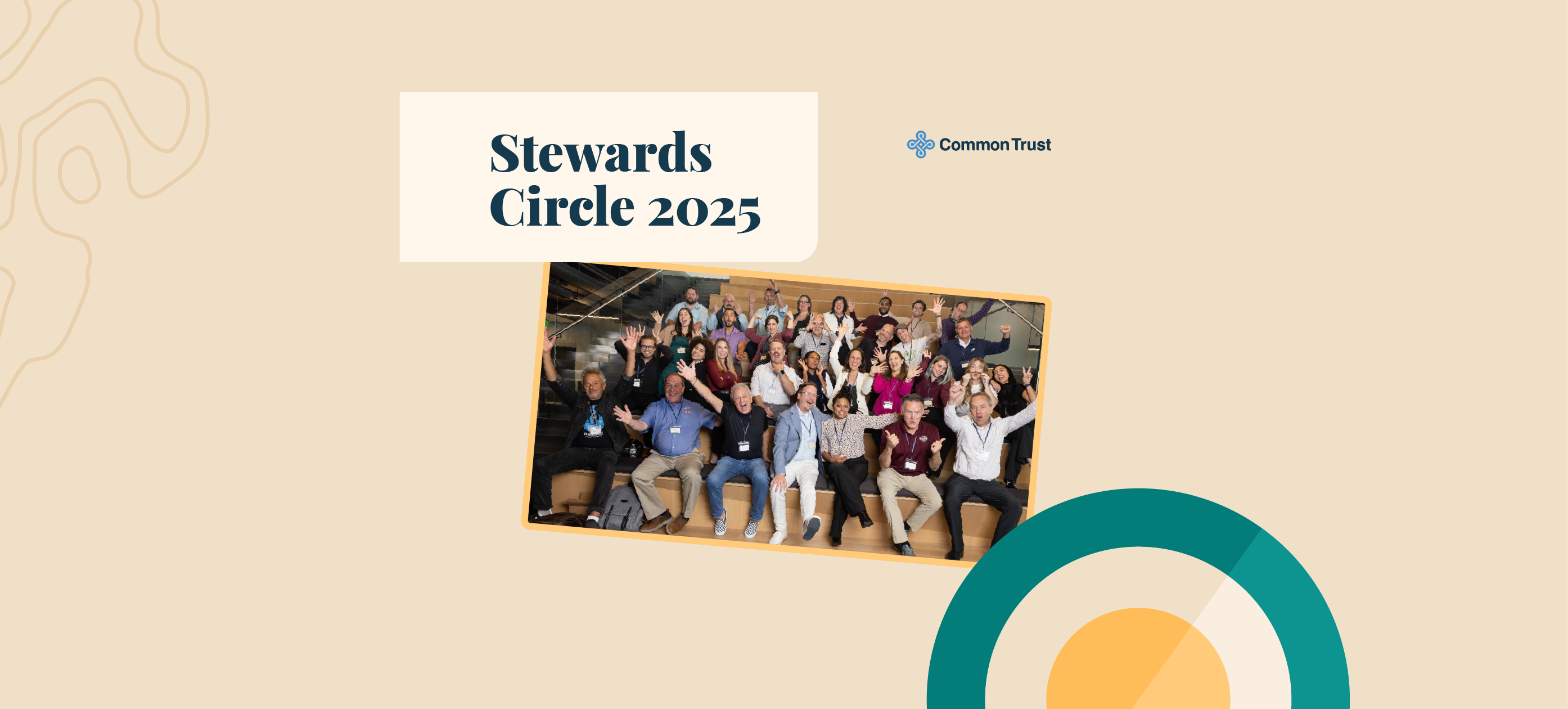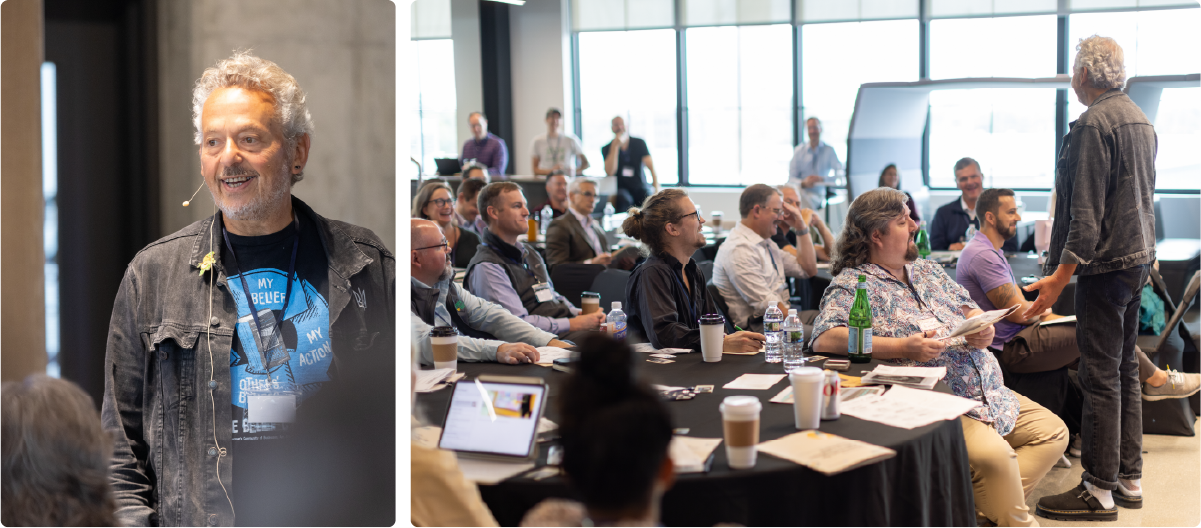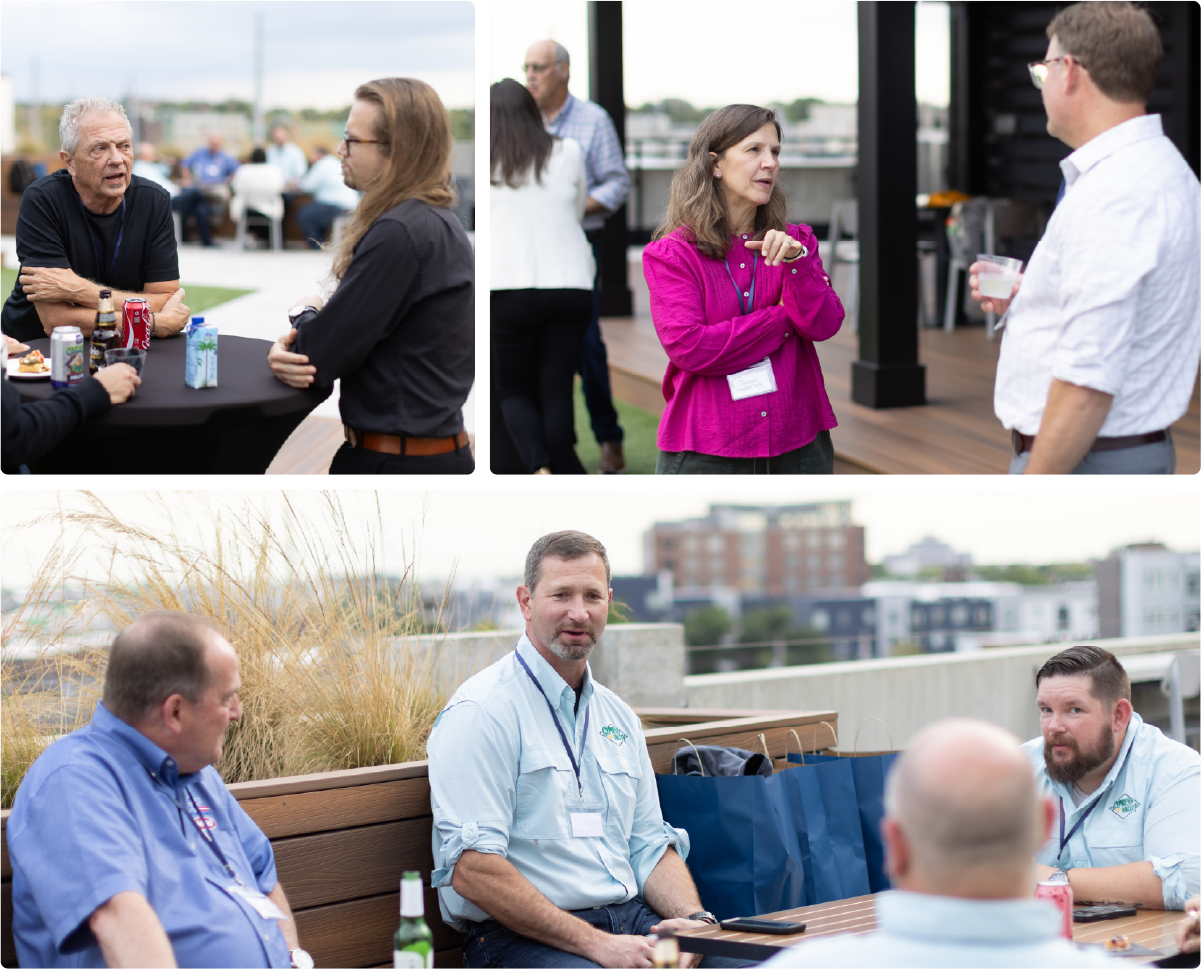Inside Stewards Circle 2025: Pioneering the Path to Employee Ownership
In late September, employee ownership leaders and operators from across the country gathered in Indianapolis, IN, for Stewards Circle 2025 — a full day of stories, lessons, and candid discussions about shaping the future of employee ownership through Employee Ownership Trusts (EOTs), hosted by Common Trust.

With more than 60% of Stewards Circle 2025 attendees already operating as employee-owned and others preparing to make the transition, the day centered on learning from one another: what’s working, what’s challenging, and how to activate ownership in daily operations.
Key takeaway: Employee ownership isn’t just a succession strategy; it’s an operating model.
Setting the stage: A movement taking root
Zoe Schlag, CEO and co-founder of Common Trust, kicked off Stewards Circle 2025 by naming what brought everyone together: a belief that employee ownership isn’t just a way to exit — it’s a better way to operate.
She shared a story from a founder who once told her he wanted to “be able to look people in the eye at the grocery store” after selling his business. It’s a simple benchmark, Zoe acknowledged, but one that captures what responsible ownership transitions are truly about: trust, fairness, and community.
Zoe spoke about how quickly the employee ownership movement is growing and how each company in the room represents a step toward normalizing ownership transitions that keep jobs, culture, and legacy intact.
Session highlights:
- Employee ownership is as much an operating model as it is a transition plan.
- Fair transitions protect culture, people, and community ties.
- Peer learning accelerates understanding and sparks successful strategies.
“Employee ownership isn’t the end game — it’s the starting point for something new.” — Zoe Schlag, CEO, Common Trust
From succession to stewardship: Cypress Valley Meat Company’s EOT journey
In the day’s first session, Cypress Valley Meat Company leaders — Ben Wihebrink (CFO), Chris Shaw (CEO), and Brandon Dunn (President) — described how their Arkansas-based business is already operating with employee ownership principles ahead of completing its transition to an Employee Ownership Trust (EOT) this October.
After the passing of founder Andy Shaw in 2021, the leadership team began exploring succession options that would both honor his legacy and ensure long-term stability for their growing workforce. Through that process, they found that employee ownership offered a way to formalize their existing commitment to loyalty, transparency, and shared success.
They explained that the EOT allows them to build on what already exists — a culture where people look out for one another and take pride in their work. For them, the trust isn’t about changing what makes the company special; it’s about ensuring those values endure.
Ben, Chris, and Brandon also spoke about the importance of transparency — from open-book financials to everyday moments of recognition, like their “Meat the Rewards” program, which celebrates employees for living out the company’s values through initiative, collaboration, and community.
Session highlights:
- Culture and structure should reinforce each other, not compete.
- Make ownership tangible through visibility and recognition.
- Employee ownership formalizes what’s already true.

Governance in practice: Lessons from RDA Consulting
Next, Amalia Freedman, CEO of RDA Consulting, reflected on the company’s first three years as an Employee Ownership Trust (EOT) — and what it takes to translate purpose into practice across governance, profit sharing, and employee engagement.
Amalia emphasized that governance design is a living process. Early on, RDA built a structure that looked right on paper but blurred responsibilities between its Board of Directors and Trust Stewardship Committee. Over time, the team refined that structure so each group could focus on what it does best: the board guides strategy and oversight, while the committee ensures employee voices remain central to the company’s mission.
“You don’t design perfect governance from day one — you grow into it.” — Amalia Freedman, RDA Consulting
She also underscored how communication and profit sharing have strengthened RDA’s ownership culture. Regular company updates, clear decision-making processes, and open dialogue with trust stewards have helped employees connect their contributions to organizational success.
Session highlights:
- Governance evolves through practice — clarity comes from doing, not just designing.
- Clearly defined roles create focus, accountability, and trust.
- Communication builds confidence and alignment across the organization.

A revolution of dignity: A conversation with Ari Weinzweig
During the keynote, focus shifted from business models to mindset as Ari Weinzweig, co-founder of Zingerman’s Community of Businesses, discussed what it really means to lead through stewardship.
Ari shared stories from Zingerman’s four-decade journey — from its beginnings as a single deli in Ann Arbor to a community of employee-owned businesses — emphasizing that stewardship starts with a choice: to care for something bigger than yourself. He described how Zingerman’s defines success not by growth or revenue, but by how well its values show up in daily actions.
His perspective offered a grounding reminder that employee ownership starts with mindset, not mechanics.
For Ari, ownership isn’t just a financial structure; it’s a practice of responsibility, humility, and service. He encouraged leaders to think of themselves not as business owners or executives, but as temporary stewards of an ongoing story — one that future employees will continue to write.
Highlights from Ari’s talk:
- Stewardship begins with mindset — choosing to serve rather than control.
- Culture scales through clarity and consistency, not charisma.
- The work of ownership is ongoing; it’s something we do, not something we have.
“We don’t own the business — we’re taking care of it for the next generation.” — Ari Weinzweig, Co-Founder, Zingerman's

The EOT Circle: Powerful peer-led learning
The collaborative EOT Circle session opened with Kevin Clegg, CEO of Clegg Auto, sharing his company’s mission of cultivating an “ownership mindset” among employees.
Kevin spoke about life after Clegg Auto’s EOT transition and how his team has worked to help employees understand what ownership looks like in daily decisions. Building that mindset, he noted, takes time and intention — consistent communication, shared goals, and a focus on long-term thinking over short-term wins.
“The work doesn’t end when the papers are signed — that’s when ownership really begins.” — Kevin Clegg, CEO, Clegg Auto
From there, attendees joined rotating, topic-based breakouts to share experiences, compare notes, and discuss the real-world applications of employee ownership.
A few themes emerged:
- Clarity and communication are key. The more openly ownership is discussed, the more it’s understood.
- Ownership evolves through practice. Tools, meetings, and policies matter less than daily habits and decision-making.
- Community accelerates learning. Peer discussions revealed both the diversity and shared spirit of the movement.
Shaping the future of employee ownership
As Stewards Circle 2025 drew to a close, Zoe reflected on the momentum building across the employee ownership community. Throughout the day, leaders had offered stories of courage, experimentation, and perseverance — each contributing to a collective understanding of what it means to lead through ownership.
She emphasized that employee ownership isn’t just a structure or an exit strategy — it’s a commitment to reimagining how companies can create long-term value for their people and communities. The conversations in Indianapolis reflected a larger movement toward businesses that are both profitable and purposeful.
“Each story shared today becomes part of the foundation for what comes next — a more inclusive, sustainable model of ownership.” — Zoe Schlag, CEO, Common Trust
Zoe closed with a call to keep the dialogue going — to share lessons learned, connect with other owners, and continue shaping what this next era of ownership will look like.
Session highlights:
- Employee ownership isn’t the finish line; it’s the framework for how we lead and operate.
- Growth depends on connection — learning from peers and sharing openly.
- Every transition creates a blueprint for others to follow.

Interested in what employee ownership could look like for your company?
Stewards Circle was just one moment in a growing conversation about the future of ownership. If you’re exploring what an Employee Ownership Trust (EOT) could mean for your team, we’d love to talk.
Schedule a free advisory call to learn how Common Trust helps founders design ownership transitions that protect culture, reward employees, and keep companies independent.
{{cta-short}}
Exit with Purpose
One of our experienced advisors can quickly answer all your questions and help see if our model makes sense for your business.

